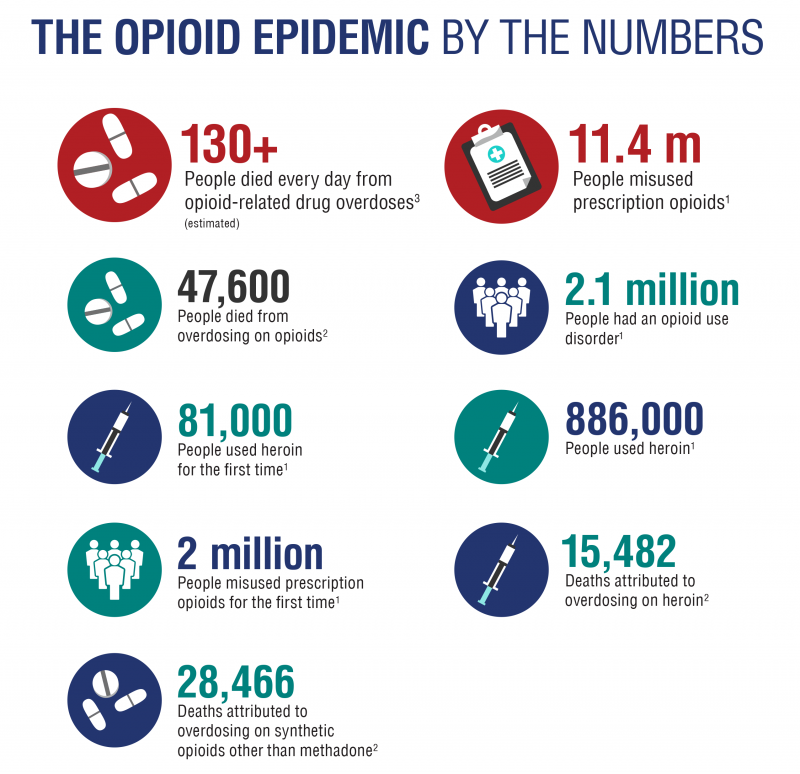Opioid Overdose Crisis
The opioid overdose crisis continues to worsen and evolve due to the increase in fatalities involving synthetic opioids. The most recent data on the opioid overdose crisis is from the Morbidity and Mortality Weekly Report which shows a 12% year over year increase in opioid overdose deaths (2016-2017).
More than 2.1 million Americans have an opioid use disorder (OUD), including 886,000 with heroin use disorder and 81,000 people who used heroin for the first time. Overall life expectancy in the U.S. began to decline in 2015 due to the opioid overdose crisis, the first such decrease since the 1960s. According to a recent report from the Centers for Disease Control and Prevention in the year 2017, 47,600 Americans died of opioid overdoses, a 12% increase over 2016. This means that on average, 130 Americans died each day from opioid overdoses in 2017, up from 116 daily opioid overdose fatalities in 2016. Synthetic opioids which include illicitly manufactured fentanyl and fentanyl analogs were involved in almost 60% of opioid overdose deaths, an increase of about 45% from the previous year. Overdose deaths from prescription opioids and heroin remained stable during 2016-2017.
A diagnosis of OUD confers a high risk for adverse medical consequences, including poor physical and mental health, increased health care utilization, a higher incidence of HIV and Hepatitis C, opioid overdose deaths and a 14-fold higher all-cause mortality than the general population. OUD is also associated with many adverse non-medical consequences, including higher rates of criminal behavior and incarceration, impaired social functioning, reduced labor force participation and lost productivity. The Council of Economic Advisers (CEA) estimated the economic cost of the opioid crisis at $504 billion in 2015. The CEA noted that previous economic cost estimates greatly undervalued the most important component of the loss – fatalities resulting from overdoses. The CEA estimate was derived from 2015 data, when opioid overdose mortality was 30% lower than the most recently available estimate (2017).
The increase in opioid overdose and deaths is not for lack of significant efforts on the part of operating divisions of the HHS, including the National Institute on Drug Abuse (NIDA), the Food and Drug Administration (FDA) and SAMHSA. These efforts have included the NIH HEAL Initiative, a public-private partnership in conjunction with the FDA to address the opioid crisis via more effective and safe ways to prevent and treat OUD and overdose; increased availability of the opioid overdose reversal agent naloxone; expanded access to medication-assisted treatments; and linking individuals with OUD to treatment and harm-reduction services. Without significant Congressional appropriations for the opioid overdose crisis, and intervention by various HHS operating divisions and other stakeholders at the Federal, State and local level, the devastation from the opioid overdose crisis would be far greater.


